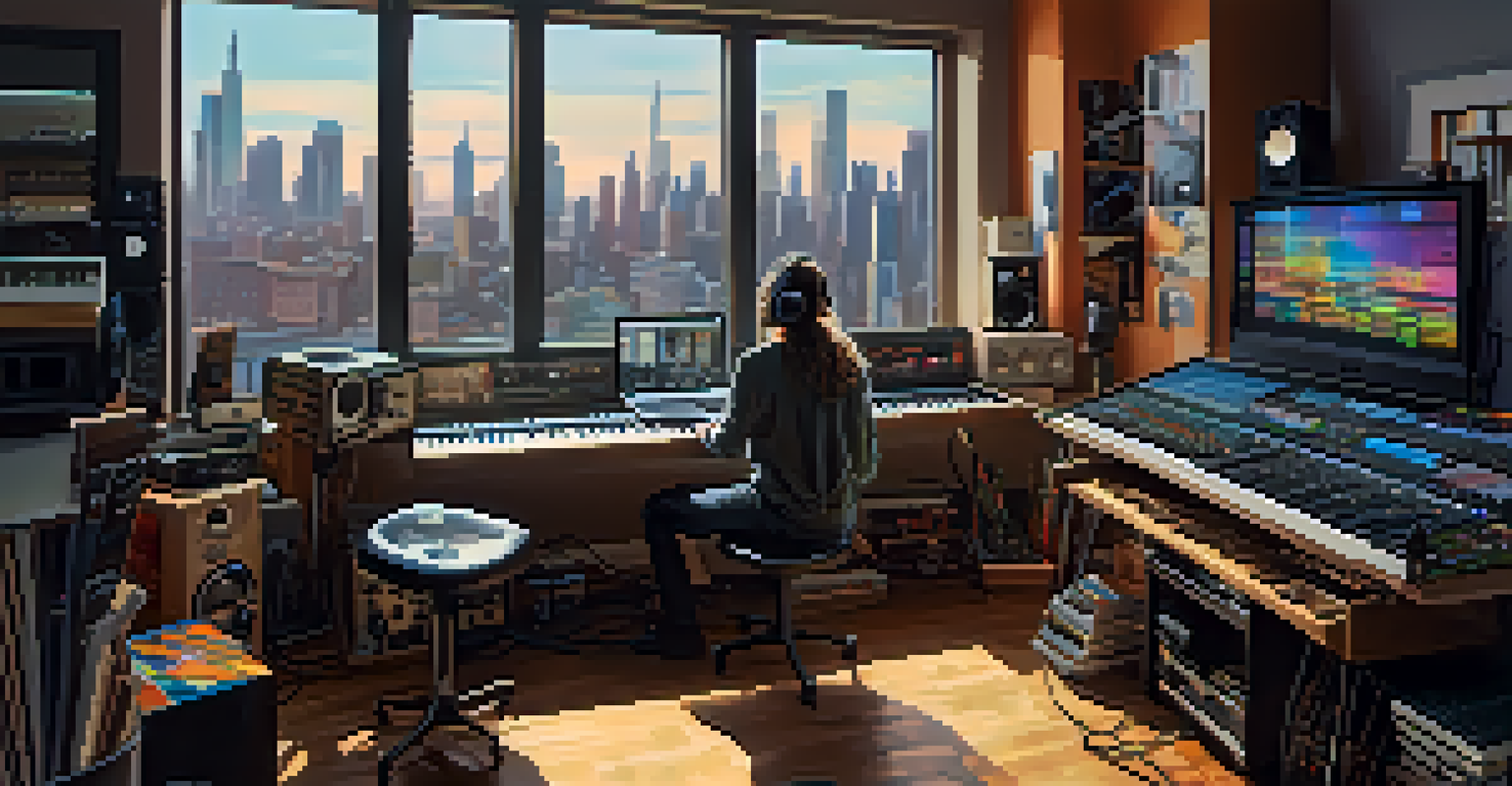Exploring the Impact of 3D Audio on Music Production Techniques

What is 3D Audio and How Does it Work?
3D audio is a sound reproduction technology that creates a multi-dimensional audio experience, allowing listeners to perceive sound as if it surrounds them. Unlike traditional stereo, which delivers sound from two channels, 3D audio can simulate sounds coming from above, below, and all around. This immersive quality is achieved through techniques like binaural recording and spatial audio, making listeners feel like they are in the center of the action.
Music is a world within itself; it’s a language we all understand.
Imagine walking through a forest where you can hear leaves rustling to your left and a bird chirping above you. That's the essence of 3D audio — it places you right in the middle of the soundscape. This technology is not just used for music, but also in gaming and virtual reality, enhancing the overall experience by creating a more realistic environment.
As artists and producers become more aware of 3D audio's capabilities, they can utilize this technology to push creative boundaries in music production, leading to innovative soundscapes that captivate listeners in new ways.
The Evolution of Music Production Techniques
Music production has undergone significant changes over the decades, from analog tape recording to digital audio workstations (DAWs). Each technological advancement has introduced new techniques and tools that have reshaped how music is created. Today, the addition of 3D audio is yet another evolution in this ongoing transformation, providing artists with fresh ways to express their creativity.

For instance, producers can now layer sounds in a way that makes them feel spatially distinct, enhancing the listener's experience. This spatial awareness allows musicians to create depth in their tracks, moving beyond flat soundscapes to fully immersive audio experiences. The use of 3D audio techniques can make a simple melody feel grand and expansive.
3D Audio Creates Immersive Soundscapes
3D audio technology allows listeners to experience sound as if it surrounds them, enhancing the overall audio experience in music, gaming, and virtual reality.
As more users adopt 3D audio technology, it becomes essential for music producers to stay informed about these advancements, ensuring they can leverage new techniques to enhance their productions.
How 3D Audio Enhances Listener Engagement
One of the most significant impacts of 3D audio is its ability to captivate listeners and create a more engaging experience. When music feels immersive, listeners are more likely to connect emotionally with the sound. This emotional connection can lead to increased interest in the artist's work and a stronger bond with their music.
Technology is best when it brings people together.
Think about how a concert feels different from listening to a song through headphones. In a live setting, the sound envelops you, making you feel part of the performance. 3D audio seeks to replicate this feeling in recordings, encouraging listeners to become more active participants rather than passive consumers.
By utilizing 3D audio, artists can invite their audience into their creative world, making each listen a new and exciting adventure. This level of engagement is vital in today’s music landscape, where listeners have endless options at their fingertips.
The Role of Technology in 3D Audio Production
The integration of technology in music production has always been a game-changer, and 3D audio is no exception. With software and hardware specifically designed for spatial audio mixing, producers can create intricate sound environments that were previously impossible. Tools like Ambisonics and various plugins allow for precise manipulation of sound placement in a three-dimensional space.
As technology advances, the barriers to entry for creating 3D audio are also lowering. More musicians are gaining access to affordable tools that enable them to experiment with spatial audio, democratizing the production process. This shift opens up new opportunities for creativity, allowing independent artists to produce high-quality, immersive music without the need for expensive studio time.
Tech Advances Democratize Music Production
The integration of affordable tools for 3D audio production empowers independent artists to create high-quality, immersive music without needing expensive studio resources.
Ultimately, embracing technology in 3D audio production not only enhances the quality of music but also empowers artists to innovate and explore new avenues in their work.
Challenges in Adopting 3D Audio Techniques
While the benefits of 3D audio are clear, there are also challenges that come with its adoption. One major hurdle is the learning curve; producers may need to invest time in understanding new software and techniques to fully utilize the potential of 3D audio. This can be daunting, especially for those who are accustomed to traditional mixing methods.
Moreover, not all listening environments are equipped to fully appreciate 3D audio. For instance, many listeners still rely on standard headphones or speakers that may not support the immersive qualities of 3D sound. As a result, artists must balance their desire to innovate with the need for accessibility in their music.
Despite these challenges, the growing interest in 3D audio is pushing producers to overcome obstacles and adapt their skills, ensuring that this technology continues to shape the future of music production.
Case Studies: Artists Using 3D Audio Effectively
Several artists have successfully integrated 3D audio into their music, showcasing its potential to create unique listening experiences. For example, some electronic musicians have utilized spatial audio techniques to create tracks that feel like immersive journeys, taking listeners on a sonic adventure through layered soundscapes. These artists demonstrate how 3D audio can enhance storytelling through music.
Another notable example is the use of 3D audio in film soundtracks, where composers strategically place sound elements to evoke emotions and enhance the narrative. This approach not only captivates viewers but also enriches the overall cinematic experience, blurring the lines between music and sound design.
Future Trends in 3D Audio Adoption
As headphone technology and streaming platforms evolve, the acceptance of 3D audio in mainstream music is likely to increase, inspiring artists to explore innovative production techniques.
By examining these case studies, aspiring producers can glean insights into how to effectively incorporate 3D audio into their work, inspiring them to experiment with new techniques and push the creative envelope.
The Future of 3D Audio in the Music Industry
As technology continues to evolve, the future of 3D audio in the music industry looks promising. With advancements in headphone technology, spatial audio is becoming more accessible to the average listener. This increased accessibility will likely lead to a broader acceptance of 3D audio in mainstream music, encouraging more artists to explore its possibilities.
Additionally, the rise of streaming platforms that support spatial audio will further propel this trend. As listeners become accustomed to immersive experiences, they will seek out music that offers this depth, pushing artists to adapt their production techniques accordingly. This shift could create a new wave of creativity in the industry, sparking innovative approaches to music creation.

Ultimately, the future of 3D audio represents an exciting frontier for artists and producers alike, offering a canvas for exploration and experimentation that can redefine how we experience music.